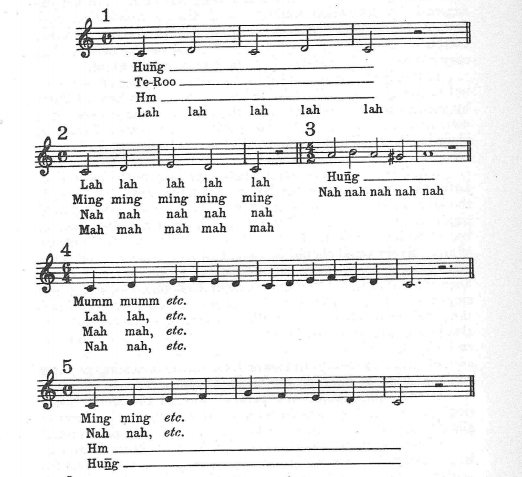Lesson 3
Now sing the vowels again with and without the L, using all three gestures with the arms given in Lesson 1.
You will hear quite a difference in tone color, associated with the arm positions.
Now pronounce in singing tone these syllables on one note, again as in No. 45.
MAH, MAY, ME, MOH, MOO.
LAH, LAY, LEE, LOH, LOO.
DAH, DAY, DEE, DOH, DOO.
BAH, BAY, BEE, BOH, BOO.
NAH, NAY, NE, NOH, NOO.

You may try these with the aid of the three kinds of arm movement as suggested.
Let the mouth move freely, the lips acting according to the natural laws of pronunciation. If you leave them alone they will soon do their duty.
Again observe the actions of the body and lips in the mirror, and avoid grinning, scowling, or strained expression of the eyes and face.
You may find you have mannerisms which you never dreamed of, and you should eradicate these at once.
Now you may practice exercises (1) to (5) with the various syllables given, first with Lah, for the entire exercise, pronouncing Lah on each note; then the other syllables in the same manner.

If you do them all this will be a fairly long lesson.
Transpose the exercises upward by semi-tones until the highest note of the exercise is C above middle C in the high voices and A in the low voices, then return to the original pitch by semi-tones again.
Low voices may commence with low A or B. High voices with middle C or D. The exercises are all printed in the key of C for convenience.
Male voices sing an octave lower than the printed notes.

Leave a Reply